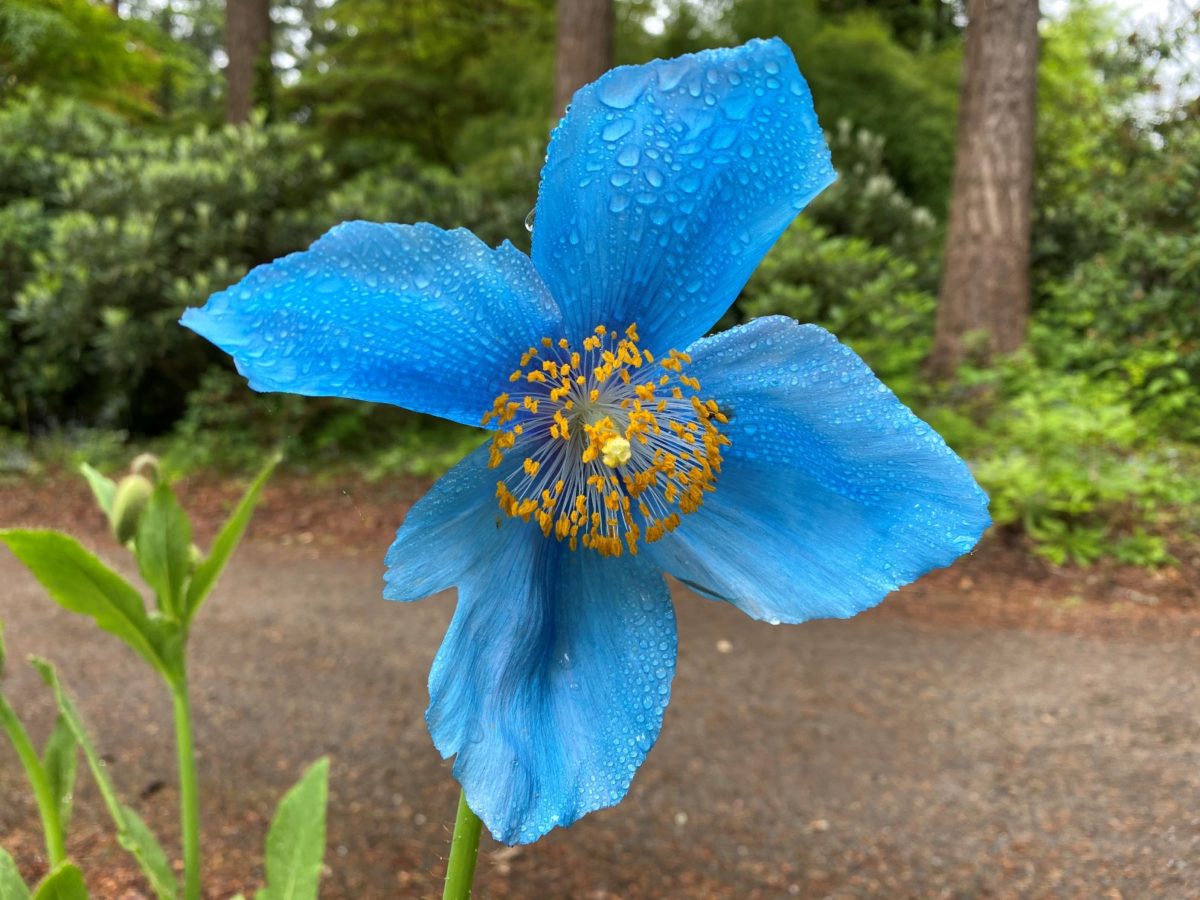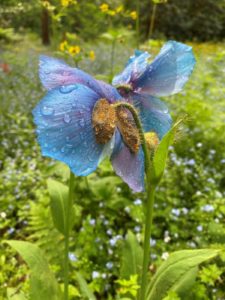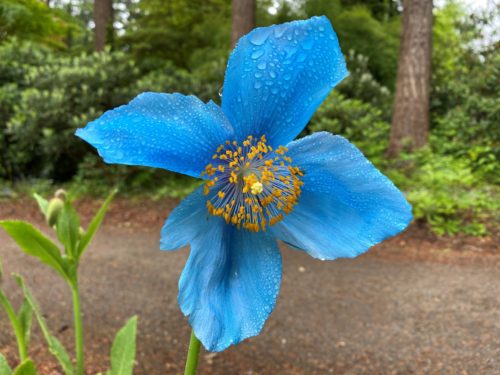
The first time I laid eyes on a Himalayan Blue Poppy was during my horticultural internship in Scotland back in 2008. Ever since then, these clear sky-blue flowers have captured my attention whenever I encounter them, just like they do for many others. When I returned to Arkansas for my horticulture degree, I attempted to grow these poppies from seeds only to learn that they originate from the alpine regions of the Himalayas, and cannot tolerate summer heat. The triple-digit temperatures in Arkansas were too much for these plants. However, after graduating, I moved to Pacific Northwest and began working at the RSBG where I discovered a ‘Blue Poppy Meadow.’ Even in this region, blue poppies can be challenging to cultivate. As someone who has worked with these flowers for ten years, I’ve learned that they require cool runoff from melting ice during the growing season since they are accustomed to alpine environments. I’ve heard stories about blue poppies being classified as weeds in places like Alaska and Scotland where summer temperatures do not exceed 75 F. If you live in an area where temperatures regularly exceed 90 F, it will be impossible to grow them unless you reside at a high elevation or possess a greenhouse with a cooling system. Once you have your plants, look for a location that provides partial shade and is free from root competition.

If you’re planning to grow Meconopsis, it’s best to avoid the hot afternoon sun and opt for filtered sun instead. To ensure that they don’t have to compete for nutrients with other plants, you can bury a container like a tub or sink in the ground, fill it up with moist soil (a mix of potting soil and compost works well), and plant your blue poppies in there. Remember not to use soil that is too heavy with clay, as this could result in the crown rotting.
Watering is crucial during the growing season, so be sure to keep up with it and consider applying slug bait early on in the season. Additionally, blue poppies are heavy feeders, so you can use either slow release granular fertilizer or liquid fertilizer. At the nursery, we prefer to use liquid fertilizer once a week during the growing season, along with the slow release granular fertilizer for potted plants.

We have available the ‘Lingholm’ cultivar of Meconopsis, a hybrid that is less finicky compared to other species and cultivars. This variety forms a large clump and produces multiple flowers from April to May. Based on our experience, planting in late summer/early fall or early spring yields higher success rates. If your blue poppy blooms in the first year after planting, it’s wise to remove the flower stalk to allow the roots to expand rather than focus on flower and seed formation, although it can be painful to do so.
If you’ve struggled with keeping blue poppies alive in the past, don’t worry, you’re not alone. Even we have lost some after three years of healthy growth. While many will prosper and last for years, there’s still a chance that some may not survive. At the RSBG, we replenish our Blue Poppy Meadow annually with new seedlings, but the original plants from 2009 are still thriving. To catch the peak blue poppy viewing season, visit us from mid-April to mid-May.
Here are some great resources:
